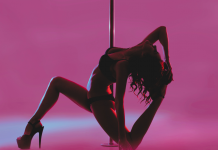The word “epidemic” may seem a bit extreme, but yet it’s the word that comes to mind when examining the rash of “stock photo” (false advertising) civil lawsuits aimed at adult nightclubs over the past couple of years. In just the last two months alone, three adult nightclubs—one in Chicago, one in Orlando and one in Detroit—have been sued by models that appeared in advertisements for those clubs in print and/or on social media.
One of the industry attorneys who has represented adult nightclubs in several of these cases is Luke Lirot, and ED Magazine had the chance to speak with him about this new form of lawsuits to hit the industry en force. In an effort to help our readers better understand the risks of using “stock photos” or photos found on the internet in their print and web ads, we asked Lirot specific questions about these lawsuits and what clubs can do to protect themselves.
ED: How many of these “stock photo” (false advertising) civil lawsuits have you been involved in over the past couple of years?
LIROT: I’ve worked 20 of these cases over the past couple of years; I’m involved with several as we speak. To give you some perspective, I’ve gotten more of these cases than I have fair labor standards (dancer class-action) cases recently, and we all know how prevalent the class-action cases have been. It seems like these stock photo cases are the new “cottage industry” for plaintiff attorneys against the adult nightclub industry.
ED: Have these type of stock photo civil cases become more prevalent recently, or have they always existed.
LIROT: Though these types of cases aren’t new, with the advent of social media, there has been a significant proliferation of these cases over the past few years. There are plaintiff attorneys who believe they can generate interest in these cases for financial gain, and due to facial recognition software and other complex technological methods that help them go back into various websites and social media from years past. I’m working on cases now that go back to images that ran in 2011 or 2012.
ED: What is the specific law that the plaintiffs are saying that clubs have violated by using photos from stock photo websites, or images that the clubs have allegedly found online an used in their club and/or event advertisements?
LIROT: Many of the photos have come from photo subscription sites [such as iStockphoto.com, shutterstock.com, etc.]. These are often photos of women that reflect a specific “theme”; Christmas in July, St. Patrick’s Day, Halloween, etc. Plaintiffs in these cases admit that the photos in question belong to the photographer, and that the photographer owns the copyright and can distribute those photos in any way they want.
The theory that’s being advanced in many of these (false advertising) cases by the plaintiff attorneys is not so much about the copyright issue, it’s under the Lanham Act (note: The Lanham Act, also known as the Trademark Act of 1946, is the federal statute that governs trademarks, service marks, and unfair competition. It was passed by Congress in 1946 and signed into law by President Harry Truman). That is, you’ve used my image to promote your club, therefore, you’ve engaged in “false advertising” by giving people the impression that I would be present at your club.
The second issue that is being addressed in these suits is that of “false endorsement”: That is, “You’ve used my ‘celebrity’ status to promote your business, giving the public the impression that I endorse your club.”
ED: How “famous” do you have to be to pursue a Lanham Act claim?
LIROT: Some courts have claimed that if you make a living from your image, that’s enough to establish standing to pursue the claim. But it’s the depth of your “celebrity” that may determine whether you deserve damages, if at all.
ED: In your estimation, are plaintiff attorneys alleging that customers expect to see the girl they see in the ad in the club, or that the girl in the ad is “endorsing” the club in some way?
LIROT: I’d like to think that no one is naive enough to believe that the use of that pretty face in the ad should give the impression to anyone with an IQ above their shoe size that that model will be present at the club. The same goes for their “endorsement”; if you don’t know who that model is, why would you care whether or not they were endorsing something.
For example, in a situation where a girl in a superhero costume is picked for use in an (advertisement), that photo was picked because of the costume/theme, not because of the girl in the photo. The concept that these models were chosen for “who” they are is erroneous.
If I go to Kentucky Fried Chicken and I don’t see Colonel Sanders standing behind the counter, I shouldn’t be too surprised. That’s the same mystery concept being advanced in these cases. The initial reaction to these lawsuits is that they are completely frivolous, but the courts are allowing them to go forward which is another example of how the internet is fertile ground for the exploitation of comparitively antiquated federal causes of action. I’m sure in 1946, no one passed the Lanham act thinking it would be used for some obscure promotion that only a handful of people may have even seen on social media.
ED: What type of language puts clubs at the greatest potential risk for losing one of these “stock photo” or false advertisment/defamation civil suits?
LIROT: If there’s an ad that says, “Come and join me at the club,” or “Come and see this girl at the club,” if there’s language that says that, I’m concerned. But without this type of language, it’s very speculative to think that a customer believes that any model endorses the club or that any model is a dancer at any club.
ED: Can a club use a “body shot” image from a stock photo website (meaning, you can only see the model from the neck down) without fear of being sued?
LIROT: If she is still recognizable, or has a feature or characteristic that would make her recognizable, there is still the possibility of legal exposure. But in answer to your question, a club would potentially be more “protected” if they did not show the model’s face.
ED: For a club owner/operator that says, “How can I safely include photos of girls in my ads without being sued,” how would you answer them?
LIROT: You hire a photographer, and you use one of the entertainers that dance at the club and have them sign a model release. You can then send the photos and model release to your graphic artist, and there are fine graphic designers who exhibit regularly at the EXPO. Most photographers use the same all-encompassing model release [if you’re taking the photos yourself, contact your attorney to make sure you have a model release that will protect you—Ed.]. You don’t have to use stock photos if you have an adult club. I can understand an auto supply store needing to use a stock photo site, but you’re a club, you have girls already, attractive girls.
I can promise you one thing, a photo shoot and hiring a graphic designer will cost you far less than losing a civil suit. The legal fees in these cases, from beginning to end, can run over $100,000. That’s just defending yourself from the claim. With some of these suits, the plaintiffs are asking for millions of dollars. No one I’m defending is being sued for less than $250,000. You do the math.
Luke Lirot has represented countless clients in the realm of First Amendment litigation, as well as a wide variety of other types of litigation, including Constitutional Law, Civil Rights, Criminal Law, Entertainment Law, Land Use Law and Personal Injury. Lirot is a past president of the First Amendment Lawyers’ Association. He can be reached at luke2@lirotlaw.com or by calling (727) 536-2100.































